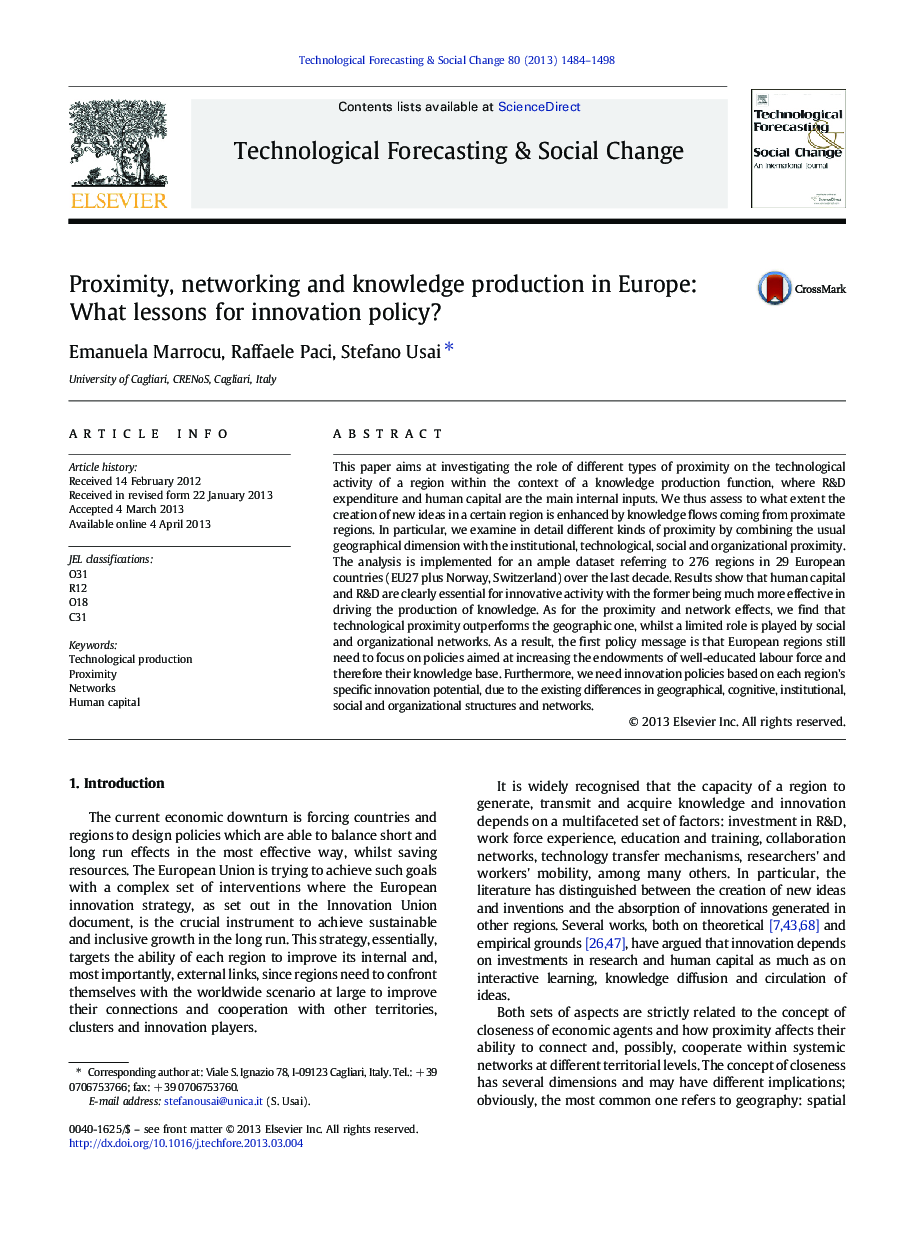| کد مقاله | کد نشریه | سال انتشار | مقاله انگلیسی | نسخه تمام متن |
|---|---|---|---|---|
| 896578 | 914846 | 2013 | 15 صفحه PDF | دانلود رایگان |

• We investigate the role of different types of proximity on regional innovative activity.
• We assess the relative importance of geographical and other dimension of proximity.
• Geography is important but less than technological and cognitive proximity.
• Social and organizational networks are also relevant although their role is modest.
This paper aims at investigating the role of different types of proximity on the technological activity of a region within the context of a knowledge production function, where R&D expenditure and human capital are the main internal inputs. We thus assess to what extent the creation of new ideas in a certain region is enhanced by knowledge flows coming from proximate regions. In particular, we examine in detail different kinds of proximity by combining the usual geographical dimension with the institutional, technological, social and organizational proximity. The analysis is implemented for an ample dataset referring to 276 regions in 29 European countries (EU27 plus Norway, Switzerland) over the last decade. Results show that human capital and R&D are clearly essential for innovative activity with the former being much more effective in driving the production of knowledge. As for the proximity and network effects, we find that technological proximity outperforms the geographic one, whilst a limited role is played by social and organizational networks. As a result, the first policy message is that European regions still need to focus on policies aimed at increasing the endowments of well-educated labour force and therefore their knowledge base. Furthermore, we need innovation policies based on each region's specific innovation potential, due to the existing differences in geographical, cognitive, institutional, social and organizational structures and networks.
Journal: Technological Forecasting and Social Change - Volume 80, Issue 8, October 2013, Pages 1484–1498